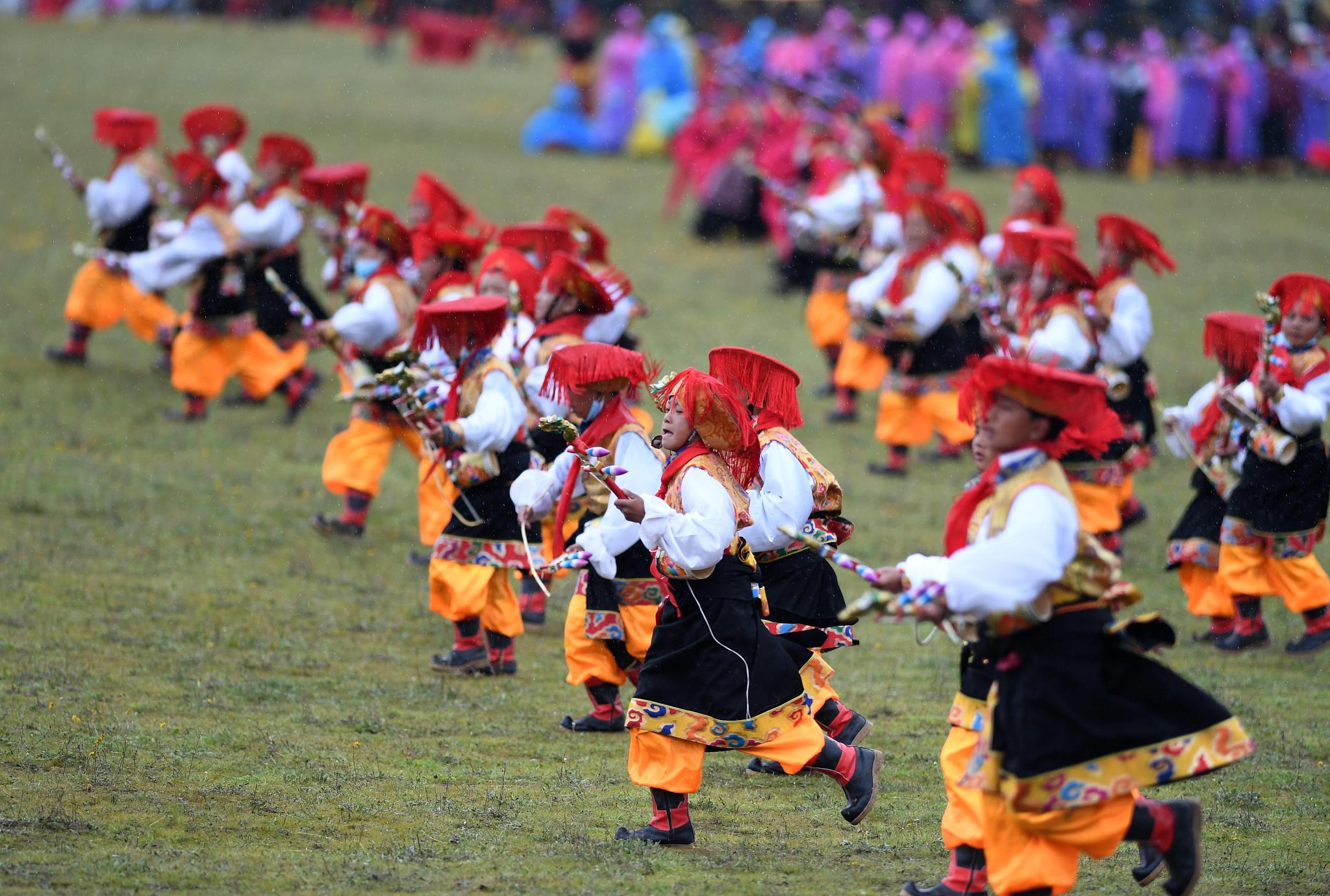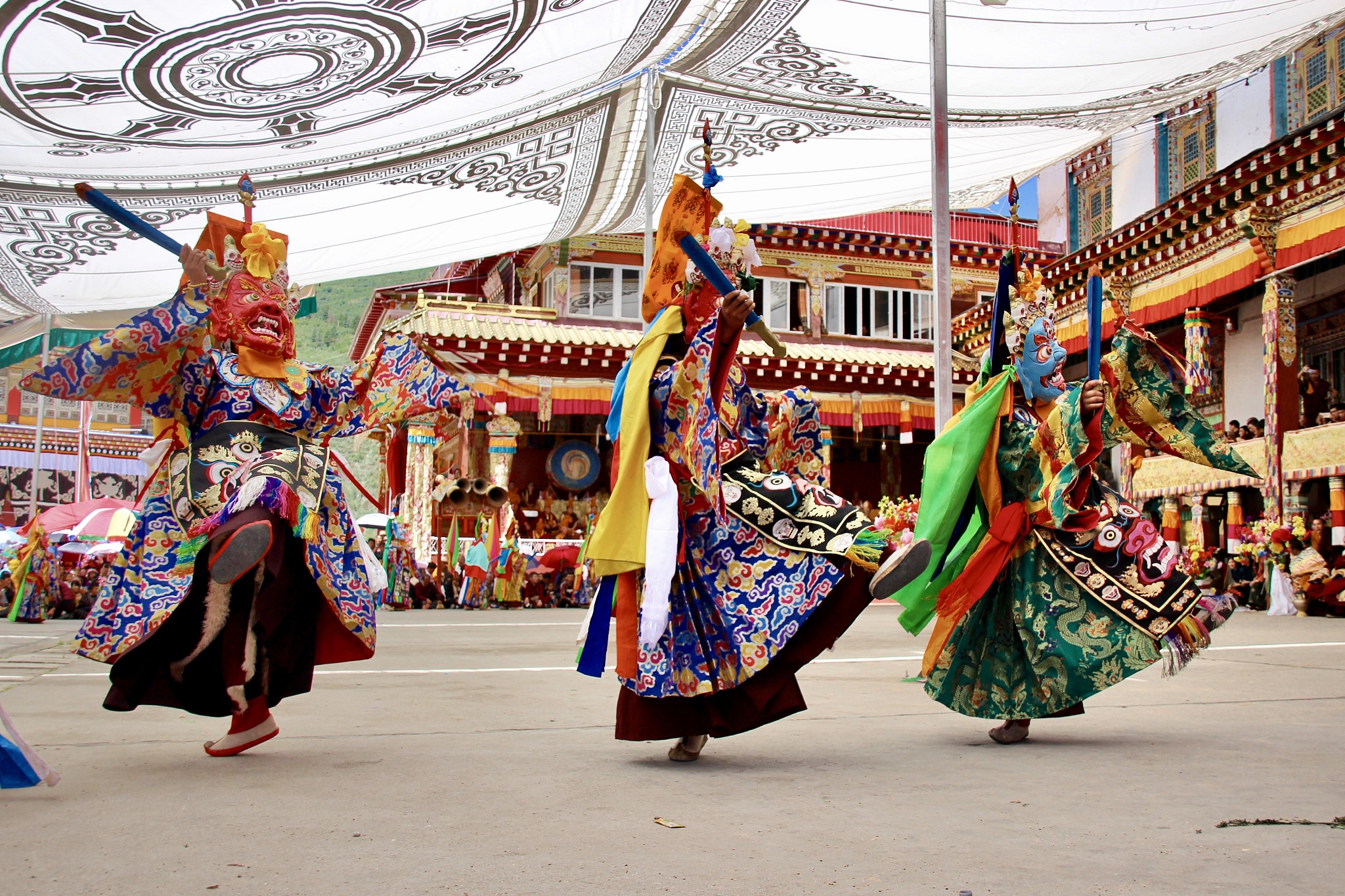Editor's Note: CGTN is embarking on a 20-day journey to Ganzi Tibetan Autonomous Prefecture in southwest China's Sichuan Province for the production of Music Voyage, a cultural documentary that traces the roots of music on the Tibetan Plateau while exploring beautiful landscapes and diverse ethnic culture. This series previews six destinations that are not to be missed along the journey.
A scenic drive from Litang to Batang along China's National Highway 318, some 170 kilometers in length, is sure to leave visitors in awe of nature's beauty.
Batang County, located in the westernmost part of Sichuan Province in southwest China and bordering Yunnan Province and the Tibet Autonomous Region, is slightly off the beaten track. Yet, there is no shortage of natural and cultural charms in the county, and it also enjoys relatively warm weather compared to other destinations along the "Music Voyage" journey thanks to its lower altitude, at an average of 2,500 meters above sea level.

Cuopu Valley is located in Batang County, Ganzi Tibetan Autonomous Prefecture, southwest China's Sichuan Province. /CFP
Cuopu Valley is located in Batang County, Ganzi Tibetan Autonomous Prefecture, southwest China's Sichuan Province. /CFP
Cuopu Valley has become a new landmark along the National Highway 318 since its official opening in late September, presenting vast lands of beauty embedded in picturesque landscapes.
It has retained primitive natural resources. Towering mountains, crystal-clear water, rich forests and grasslands make up a pleasant natural oxygen bar away from the hustle and bustle of cities.

A view of Cuopu Lake against the backdrop of snow mountains in Batang County, Ganzi Tibetan Autonomous Prefecture, southwest China's Sichuan Province. /CFP
A view of Cuopu Lake against the backdrop of snow mountains in Batang County, Ganzi Tibetan Autonomous Prefecture, southwest China's Sichuan Province. /CFP
Batang is also well known for its singing and dancing culture.
Batang Xianzi is a representative art form in the region that features Tibetan folk songs and dances. It is over 1,000 years old and is on China's national intangible cultural heritage list.
It involves a Tibetan-style two-string instrument, known as huqin, that is usually played by men, while women dance to the music wearing long-sleeved costumes. It is often performed on holidays and weddings and to celebrate the year's harvests.

Batang Xianzi is a typical Tibetan singing and dancing art form in Batang County, Ganzi Tibetan Autonomous Prefecture, southwest China's Sichuan Province. /CFP
Batang Xianzi is a typical Tibetan singing and dancing art form in Batang County, Ganzi Tibetan Autonomous Prefecture, southwest China's Sichuan Province. /CFP
Batang has also developed its own performance style of Tibetan opera – the most popular traditional opera among China's ethnic minorities, and a UNESCO intangible cultural heritage since 2009. With a history of more than 300 years, Batang Tibetan opera is seen as an auspicious tradition performed on major festive occasions.

Actors perform Tibetan opera in Ganzi Tibetan Autonomous Prefecture, southwest China's Sichuan Province. /CFP
Actors perform Tibetan opera in Ganzi Tibetan Autonomous Prefecture, southwest China's Sichuan Province. /CFP

